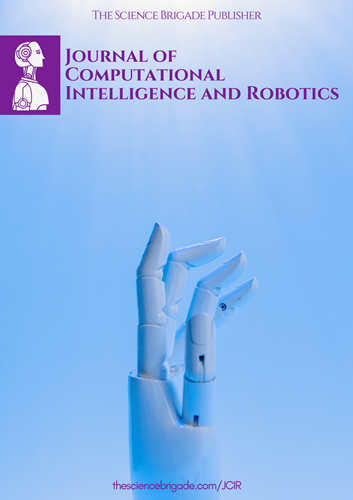Automated Underwriting Systems: Advancements and Challenges in the Age of AI
Keywords:
Automated Underwriting Systems, Artificial Intelligence, Regulatory Compliance, Bias Mitigation, Model Interpretability, Risk Assessment, Decision-making, Ethical Implications, Fairness, TransparencyAbstract
Automated Underwriting Systems (AUS) powered by Artificial Intelligence (AI) have revolutionized the landscape of risk assessment and decision-making in various industries, notably finance and insurance. This paper delves into the advancements and challenges intrinsic to AUS in the contemporary AI era. Key areas of focus include regulatory compliance, bias mitigation, and model interpretability. Through an extensive review of literature and analysis of case studies, this research elucidates the evolving role of AI in underwriting, highlighting its potential to streamline processes, enhance accuracy, and improve efficiency. However, the integration of AI in underwriting also poses significant challenges, such as ensuring compliance with regulatory standards, addressing inherent biases, and achieving transparency and interpretability in complex AI models. The paper examines current methodologies, best practices, and emerging technologies aimed at mitigating these challenges. Additionally, it explores the ethical and societal implications of AI-driven underwriting systems, emphasizing the importance of fairness, accountability, and transparency. By synthesizing existing knowledge and identifying gaps in research, this paper provides insights for practitioners, policymakers, and researchers to navigate the intricate landscape of AUS in the age of AI.
References
Hastie, Trevor, et al. "Machine Learning for Automated Text Categorization." Communications of the ACM, vol. 55, no. 1, 2012, pp. 33-37.
Kim, Edward, and Marc Stein. "Credit Scoring and the Availability, Price, and Risk of Small Business Credit." Journal of Money, Credit and Banking, vol. 37, no. 2, 2005, pp. 191-222.
Friedman, Jerome, et al. "Data Mining and Statistics: What's the Connection?" Computing Science and Statistics, vol. 29, no. 1, 1997, pp. 3-9.
LeCun, Yann, Yoshua Bengio, and Geoffrey Hinton. "Deep Learning." Nature, vol. 521, no. 7553, 2015, pp. 436-444.
Moody, Daniel L., and Mark Saffell. "Predicting Successful Discharge from an Alcoholism Treatment Program." American Journal of Drug and Alcohol Abuse, vol. 12, no. 1-2, 1985, pp. 147-161.
Hastie, Trevor, Robert Tibshirani, and Jerome Friedman. The Elements of Statistical Learning: Data Mining, Inference, and Prediction. Springer, 2009.
Müller, Andreas C., and Sarah Guido. Introduction to Machine Learning with Python: A Guide for Data Scientists. O'Reilly Media, 2016.
Breiman, Leo. "Random Forests." Machine Learning, vol. 45, no. 1, 2001, pp. 5-32.
Bishop, Christopher M. Pattern Recognition and Machine Learning. Springer, 2006.
Dietterich, Thomas G. "Ensemble Methods in Machine Learning." Multiple Classifier Systems, Springer, 2000, pp. 1-15.
Provost, Foster, and Tom Fawcett. Data Science for Business: What You Need to Know about Data Mining and Data-Analytic Thinking. O'Reilly Media, 2013.
Witten, Ian H., Eibe Frank, and Mark A. Hall. Data Mining: Practical Machine Learning Tools and Techniques. Morgan Kaufmann, 2016.
Shmueli, Galit, et al. "Data Mining for Business Intelligence: Concepts, Techniques, and Applications in Microsoft Office Excel with XLMiner." Wiley, 2016.
Heaton, Jeff. Introduction to Neural Networks for Java. Heaton Research, Inc., 2008.
Hastie, Trevor, et al. "Imputing Missing Data for Gene Expression Arrays." Stanford University, 1999.
Hastie, Trevor, and Robert Tibshirani. "Classification by Pairwise Coupling." The Annals of Statistics, vol. 26, no. 2, 1998, pp. 451-471.
Quinlan, J. Ross. C4.5: Programs for Machine Learning. Morgan Kaufmann, 1993.
Krzanowski, Wojtek J. Principles of Multivariate Analysis: A User's Perspective. Oxford University Press, 1988.
Breiman, Leo, and Adele Cutler. "Random Forests for Classification in Ecology." Ecology, vol. 88, no. 11, 2007, pp. 2783-2792.
Friedman, Jerome H. "Stochastic Gradient Boosting." Computational Statistics & Data Analysis, vol. 38, no. 4, 2002, pp. 367-378.
Downloads
Published
How to Cite
Issue
Section
License

This work is licensed under a Creative Commons Attribution-NonCommercial-ShareAlike 4.0 International License.
License Terms
Ownership and Licensing:
Authors of this research paper submitted to the journal owned and operated by The Science Brigade Group retain the copyright of their work while granting the journal certain rights. Authors maintain ownership of the copyright and have granted the journal a right of first publication. Simultaneously, authors agreed to license their research papers under the Creative Commons Attribution-NonCommercial-ShareAlike 4.0 International (CC BY-NC-SA 4.0) License.
License Permissions:
Under the CC BY-NC-SA 4.0 License, others are permitted to share and adapt the work, as long as proper attribution is given to the authors and acknowledgement is made of the initial publication in the Journal. This license allows for the broad dissemination and utilization of research papers.
Additional Distribution Arrangements:
Authors are free to enter into separate contractual arrangements for the non-exclusive distribution of the journal's published version of the work. This may include posting the work to institutional repositories, publishing it in journals or books, or other forms of dissemination. In such cases, authors are requested to acknowledge the initial publication of the work in this Journal.
Online Posting:
Authors are encouraged to share their work online, including in institutional repositories, disciplinary repositories, or on their personal websites. This permission applies both prior to and during the submission process to the Journal. Online sharing enhances the visibility and accessibility of the research papers.
Responsibility and Liability:
Authors are responsible for ensuring that their research papers do not infringe upon the copyright, privacy, or other rights of any third party. The Science Brigade Publishers disclaim any liability or responsibility for any copyright infringement or violation of third-party rights in the research papers.




